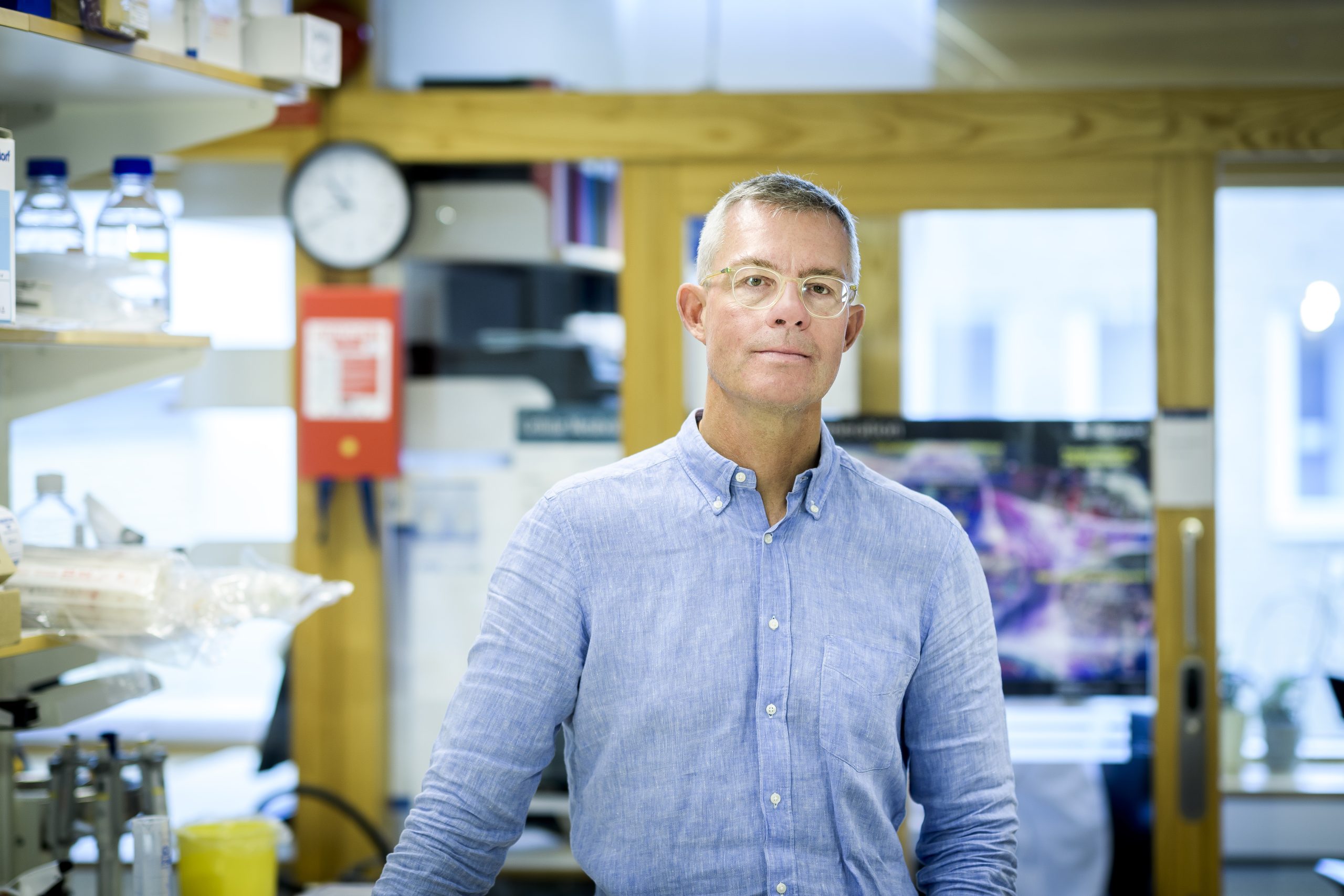Professor Hindrik Mulder’s groundbreaking research on islet cells and his commitment to the scientific community have been recognised as he receives the 2024 Novo Nordisk Foundation Lecture Prize, which comes with a DKK 600,000 award.
Professor Hindrik Mulder is a prominent figure in the field of diabetes research. He is the Principal Investigator of the Unit of Molecular Metabolism, Department of Clinical Sciences, at Lund University, Sweden, and is particularly renowned for his significant contributions to our understanding of metabolic and molecular mechanisms in the islets of Langerhans (clusters of specialized cells, including insulin-producing beta cells, which are scattered throughout the pancreas) that underlie type 2 diabetes.
“I’m so honoured to receive the Lecture Prize,” says Professor Mulder. “I see this as recognition that the work we are doing is important. While I have been personally honoured, I would like to stress that my work is a group effort – everything I have achieved throughout my career has been dependent on the great people with whom I work.”
The Novo Nordisk Foundation Lecture Prize, established in 1979, is awarded annually by the Foundation and the Scandinavian Society for the Study of Diabetes (SSSD) to recognise a Nordic scientist’s outstanding contribution within research or treatment related to diabetes. It is accompanied by an award of DKK 500,000 for research and a personal award of DKK 100,000. As is customary with Lecture Prize recipients, Professor Mulder will hold a lecture at the SSSD annual conference, which this year will be held in Oulu later in May.
Professor Mulder was selected as this year’s recipient by a committee comprising members of the Novo Nordisk Foundation’s Committee on Endocrinology and Metabolism – including former Chair, Professor Anna Krook from the Karolinska Institute, Sweden – and Professor Bjørn Olav Åsvold, from the HUNT Research Centre, Norway, and Chair of the SSSD.
“Hindrik is a worthy recipient of this year’s Lecture Prize,” says Professor Lena Eliasson, Department of Clinical Sciences, Lund University Diabetes Center, Sweden and newly appointed Chair of the Committee on Endocrinology and Metabolism. “He is incredibly generous, knowledgeable, and a really good teacher, in addition to being an excellent scientist in islet research. Among his contributions is the functional aspects on a cellular level of several diabetes-associated genes, which has increased our current understanding of this disease. In addition, Hindrik is an active contributor to the diabetes research community, both at the national and European level.”
A focus on islet research
Looking back over his research career, Professor Mulder points to three key milestones that have been significant in his efforts to understand how metabolism in the pancreatic beta cells in the islets of Langerhans control insulin secretion.
As a young researcher, Professor Mulder was part of the team that showed that hormone-sensitive lipase – an enzyme that breaks down fats called triglycerides – is present in beta cells and controls insulin secretion. This discovery has implications for both normal control of insulin release and disease processes in the islets, also known as lipotoxicity.
Professor Mulder’s focus remained on beta cells and, as his research advanced, his team elucidated the molecular processes through which genetic risk variants contribute to causing type 2 diabetes. Professor Mulder considers this to be his second milestone.
“If you carry a risk gene for type 2 diabetes, you’re at risk of developing the disease. But it has been hard to pinpoint actual mechanisms turning this risk into a disease process. You could consider this a black box. I think we’ve made a lot of efforts to open this box. When you understand what’s happening, you can do something about it – for example, you can find a drug that targets what’s going wrong,” he explains.
Professor Mulder’s third milestone concerns mitochondria in beta cells. “Mitochondria are the powerhouses of cells and particularly important in beta cells, as they translate the changes in plasma glucose levels into metabolic signals that the cells respond to and makes them release the required amounts of insulin. We’ve now been able to genetically link a risk variant with a change in mitochondrial function in type 2 diabetes,” he says.
More to come
Currently, Professor Mulder’s team has established a platform for induced pluripotent stem cells. Cells derived from individuals who carry genetic risk variants for type 2 diabetes are reprogrammed into stem cells, before differentiation into insulin-secreting cells.
“A fantastic thing about these stem cells is that you can genetically manipulate them. So, by genome editing, you can change specific risk variants into non-risk variants. This gives us the opportunity to molecularly resolve how genetic variants cause the disease,” says Professor Mulder.
“This is the most difficult task we’ve taken upon us,” he acknowledges. “It’s been slow, and we are just now writing up our first results. But this is an effort made for the long term. We hope that many groups besides ours will be able to use this amazing technology for research, but down the line the insulin-producing cells that can be made can also be used for replacement therapy in diabetes patients.”
Contributions to the clinical and research communities
In addition to his research, Professor Mulder conducts a weekly outpatient diabetes clinic at the Department of Endocrinology, Skåne University Hospital in Sweden, and makes significant contributions to the academic community as an educator and mentor at Lund University.
He also has an active role in scientific societies and research organizations; he is a member of the Boards of the European Association for the Study of Diabetes (EASD) and the European Foundation for the Study of Diabetes (EFSD), and a member of the Novo Nordisk Foundation Committee on Clinical and Translational Medicine.
Furthermore, Professor Mulder is very proud to be Editor-in-Chief of Diabetologia, one of the leading journals covering diabetology and the official journal of the EASD: “When I was a young scientist, I dreamt about getting published in Diabetologia. And I still remember how incredibly proud I felt when we succeeded with my third paper. At that time, I would not have dreamt that 25 years later I would be Editor-in-Chief of the journal. This is such an honour and has been a highlight of my career!”









